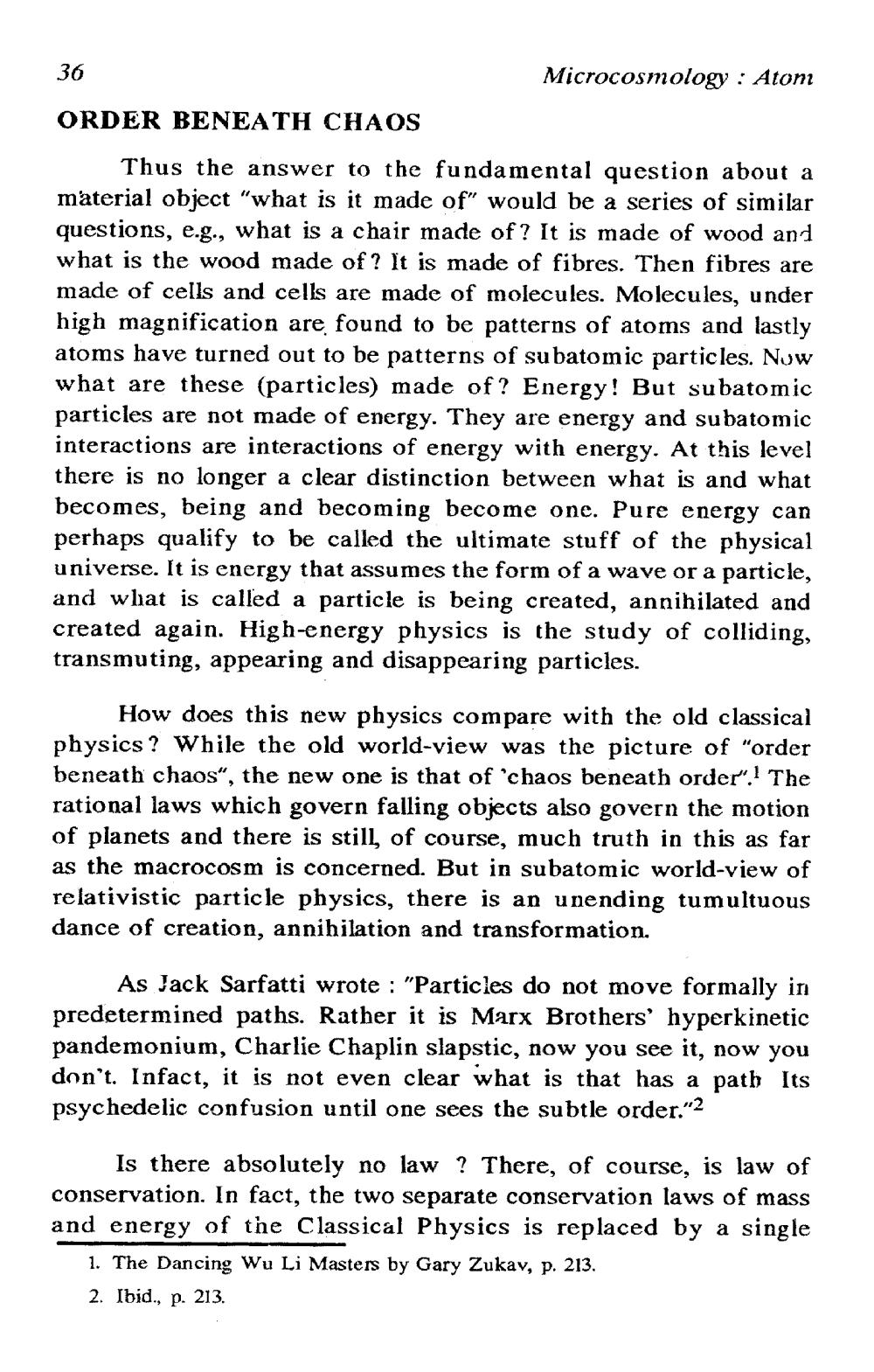________________
36
Microcosmology : Atom
ORDER BENEATH CHAOS
Thus the answer to the fundamental question about a material object "what is it made of" would be a series of similar questions, e.g., what is a chair made of? It is made of wood and what is the wood made of ? It is made of fibres. Then fibres are made of cells and cells are made of molecules. Molecules, under high magnification are found to be patterns of atoms and lastly atoms have turned out to be patterns of subatomic particles. Now what are these (particles) made of? Energy! But subatomic particles are not made of energy. They are energy and subatomic interactions are interactions of energy with energy. At this level there is no longer a clear distinction between what is and what becomes, being and becoming become one. Pure energy can perhaps qualify to be called the ultimate stuff of the physical universe. It is energy that assumes the form of a wave or a particle, and what is called a particle is being created, annihilated and created again. High-energy physics is the study of colliding, transmuting, appearing and disappearing particles.
How does this new physics compare with the old classical physics? While the old world-view was the picture of "order beneath chaos“, the new one is that of 'chaos beneath order". The rational laws which govern falling objects also govern the motion of planets and there is still, of course, much truth in this as far as the macrocosm is concerned. But in subatomic world-view of relativistic particle physics, there is an unending tumultuous dance of creation, annihilation and transformation.
As Jack Sarfatti wrote : "Particles do not move formally in predetermined paths. Rather it is Marx Brothers' hyperkinetic pandemonium, Charlie Chaplin slapstic, now you see it, now you don't. Infact, it is not even clear what is that has a path Its psychedelic confusion until one sees the subtle order."2
Is there absolutely no law ? There, of course, is law of conservation. In fact, the two separate conservation laws of mass and energy of the Classical Physics is replaced by a single
1. The Dancing Wu Li Masters by Gary Zukav, p. 213. 2. Ibid., p. 213.




